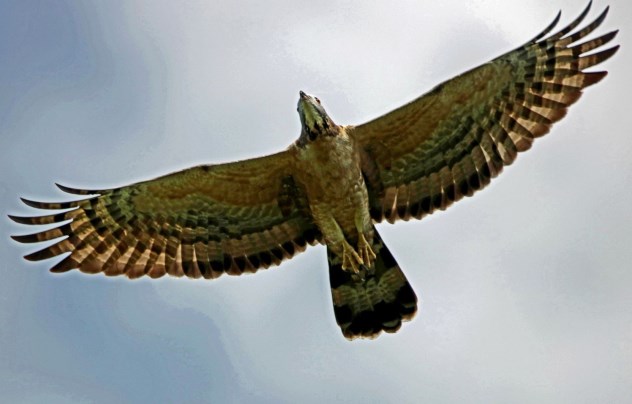The crested honey buzzard is a bird of prey in the family Accipitridae, which also includes many other diurnal raptors such as kites. eagles, and harriers. It is also known as the Oriental honey buzzard.
It is long-necked with a small head (resembling that of a pigeon), and soars on flat wings. The head lacks a strong supraciliary ridge giving it a very un-raptor-like facial appearance. It has a long tail and a short head crest. There is a dark throat stripe. Unusually for a large bird of prey, the sexes can be distinguished. The male has a blue-grey head, while the female’s head is brown. She is slightly larger and darker than the male. The male has a black tail with a white band, whilst the female resembles female honey buzzard.
It breeds in Asia from central Siberia east to Japan. It is a summer migrant to Siberia, wintering in tropical south east Asia. Elsewhere it is more-or-less resident. It is a specialist feeder, living mainly on the larvae of social bees and wasps, also eating bits of comb and honey; it will take other small insect prey such as cicadas.
The crested honey buzzard breeds in woodland, and is inconspicuous except in the spring, when the mating display includes wing-clapping. The display of roller-coasting in flight and fluttering wings at the peak of the ascent are characteristic of the genus Pernis.
The information above is from Wikipedia.
I have encountered this bird in Piasau Nature Reserve a few times but was able to capture it in flight on my camera only on one occasion. I have yet to photograph it perching on a tree.
 CY@CY Says Welcome to my dreamscape. Where a Lim is also a Ling.
CY@CY Says Welcome to my dreamscape. Where a Lim is also a Ling.
